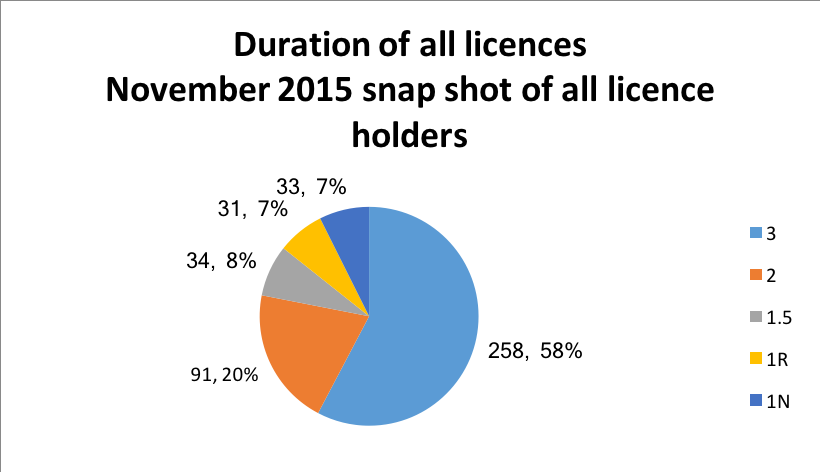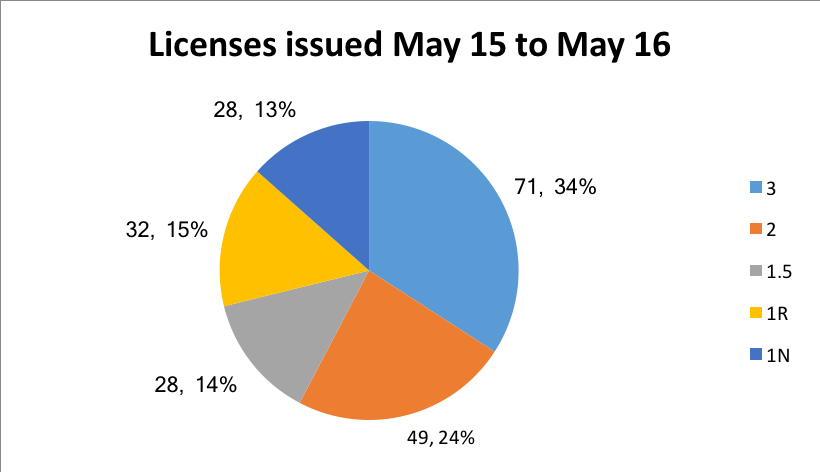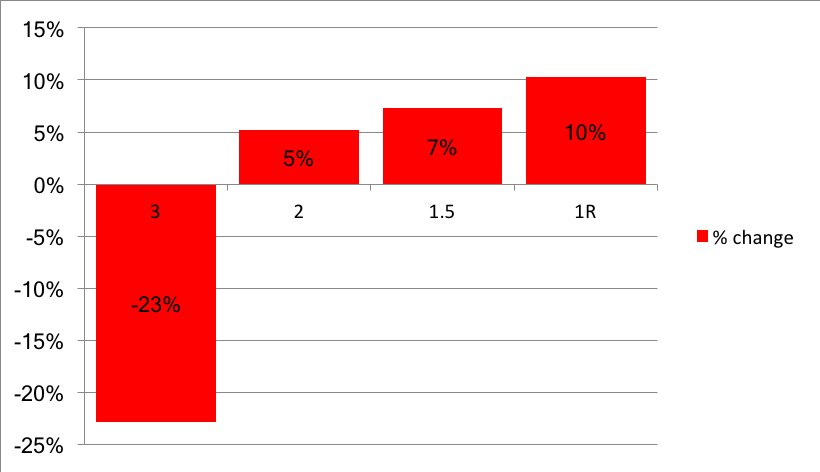We’re not alone in having wondered whether the HSE’s asbestos licensing system was entirely fit for purpose. With three possible licence durations and multiple conditions that can be attached, clients often use a LARC’s licence as a shortcut to judging competence. Re-inspection as frequently as every year creates lots of work, both for the LARC and the HSE, and doesn’t necessarily result in raised standards.
A couple of years ago, founder Nick Garland called on the HSE to settle on a standard three-year licence, backed up with formal reviews. It’s recently emerged that’s exactly what’s happening in the HSE’s electronic licensing pilot – in this article, Nick explains some of the benefits and consequences.
Note: The post below was originally published by Nick Garland on LinkedIn in 2016. You can click here to read the original post.
The licence terms awarded to asbestos contractors have reduced year on year. I examine the latest data and offer an opinion on a better way forward.
A phrase every LARC will be familiar with, as it seems to be in all letters written by the HSE. One of the principle purposes of such a regime is to:
“…maintaining and improving standards of health and safety”
The Health and Safety Commission permissioning regime policy statement
Maintain and improve standards of H&S, presumably by weeding out the incompetent and promoting best practice. But why then are average licence terms shorter now than they were? I have been in the asbestos industry since the early 1990s, and I’ve definitely noticed the change. Can we infer that the HSE’s opinion is that the industry is less safe and less competent than it was?
Licence assessments can be a very unpredictable time. All of the companies that I work with have heard of, or experienced extremely intense assessment interviews, but at the same time hear of laissez faire ones with very little detailed examination. Requests (demands) from the ALPIs is often insightful but can also be bizarrely arbitrary, with little practical application. One licence assessment ended up insisting that filing cabinets be used (rather than the perfectly acceptable system the LARC already had) – resulting in the conversion of the one and only meeting room into an archive room.
We all know anecdotally that it has become harder and harder to get the ‘full’ three-year licence from the HSE, but the latest figures are quite stark.

ALG figures, supplied by ACAD.

ALG figures, supplied by ACAD.
Excluding new licences (always one year) there has been an alarming drop of 23% in three-year licences issued in that period.

ALG figures, supplied by ACAD.
In my experience the industry, whilst there are some bad eggs, is getting much better. When I think back to the beginning of my career, where it seemed everyone had a three-year licence – the differences are remarkable. Now projects consider the wider job and recognise non-asbestos hazards. In fact, it seems a different industry with most of the stories of astonishing individual poor practice in the past.
So, if we are not getting any worse and the principle aim of a permissioning regime is to drive standards, why are the licence terms going down?
Could it simply be that there are less licensed contractors out there and the HSE want to exert more control. A tighter leash if you like? Certainly, the tone of some licence assessments and HSE visits indicate this.
The HSE tell the wider construction industry (and clients) that they shouldn’t use the licence term as a tool for selection. If the company has been given a licence (any licence) that indicates that they (the HSE) are satisfied and this should be good enough. The clients however (quite reasonably) take the view that well if you are concerned enough that you won’t give them a 3-year licence, then we are concerned too.
A licence holder can’t notify a project that extends beyond the licence expiry date.
We add then that the HSE publish the expiry date of licences – so if you track these things, you can plot a company’s standing. A client also instantly sees which companies can notify the project that they are considering. This might not seem a big concern, but very complex major works, might require 2+ years to complete – knocking out 65% of contractors.
With this in mind – are the HSE less inclined to reduce the term for a huge company? Do they back away when a downward tweak might stop a multi-million £ job in a power station? Certainly ‘the word’ is that they do.
The licence term is certainly a commercial driver.
In my opinion the HSE should remove the fixed term licence. The HSE should assess a company and give, or withhold a licence based on the interview and past performance during site visits. These licences should not expire (I hear howls of outrage).
What should replace it is a tailored review schedule for that specific contractor. Essentially, ‘Yes we are content for you to work with asbestos, but we want to see you again in 6 months, or 12 months or 3 years, just to make sure things stay on track’. A structured plan could therefore be put in place on what improvements must be implemented before the next monitoring visit.
The monitoring schedule would not be published and would not appear on the licence itself. This therefore could not be used for contractor selection. The pressure would be released from the HSE to grant 3 year licences for commercial reasons. There would be no issue of notifying jobs beyond the end of the licence expiry date – as there won’t be one. The HSE can concentrate on maintain and improving standards and do so in a much more structured way.
As I say this is an opinion piece, and I would welcome everyone’s thoughts and feedback.
I have been in the asbestos industry since the early 1990s, helping licensed asbestos removal contractors stay at the forefront of the industry.
Tweet Share on Facebook Share on LinkedinDeveloping an exposure monitoring strategy
Asbestos Network guidance on personal monitoring, health, and exposure records
The Work and Pensions Committee asbestos report: five key recommendations
A look ahead to 2022
Talking Asbestos – Nick appears on the Asbestos Knowledge Empire podcast
Better Asbestos Removal – what to do when perfect isn’t possible